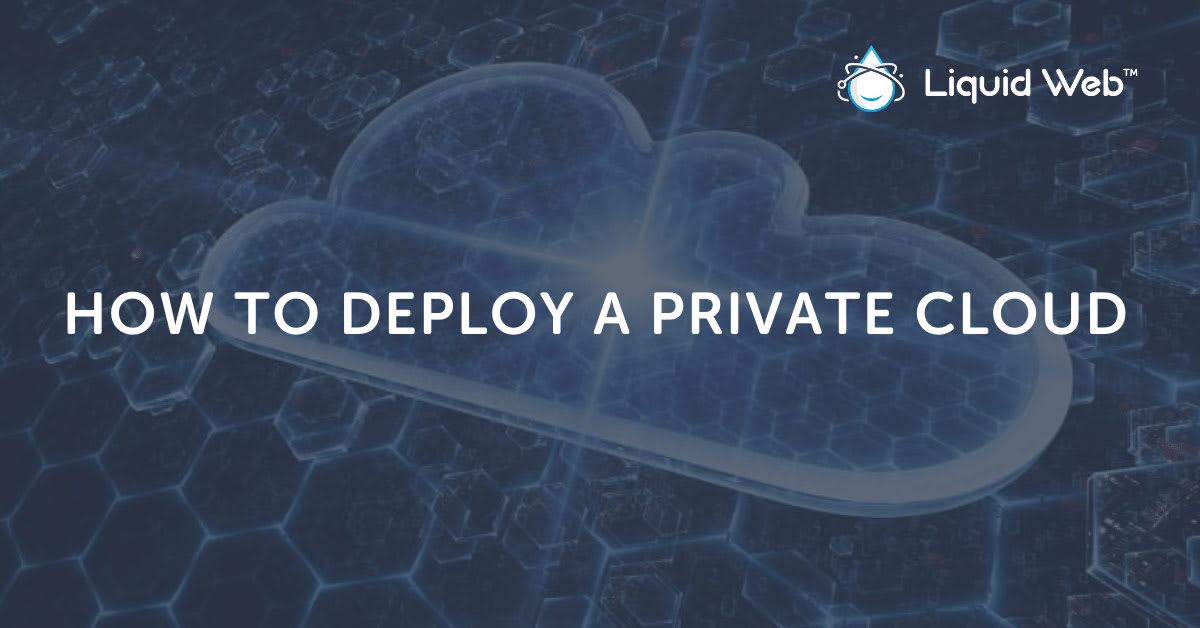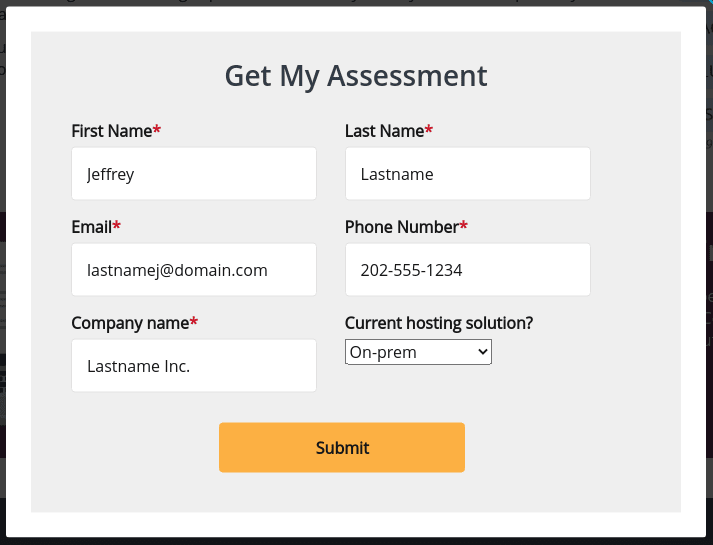
[ad_1]
Why Should You Consider Using Cloud Technology?
It’s no secret that deploying to the cloud, as compared to traditional hardware (or even VPS) can improve your hosting experience in several ways. Higher speed of deployment, lower monthly costs, and even fringe benefits such as RAID-backed storage or burstable resources are all basic components of cloud hosting.
Different types of cloud infrastructures are variably suited to different workloads and company strategies. In many cases, a public cloud can work very well, and is much simpler to deploy and maintain, but depending on your requirements, a hybrid or private cloud may be the better option. They can be just as simple for deployments, but come with the added power, security, and performance of dedicated server hardware.
What are the Differences Between Public, Private, and Hybrid Clouds?
Public Cloud
A public cloud is one in which you have no direct control over the hypervisor, which is the virtualization technology which creates virtual machines (VMs) on the cloud platform. Generally, one would purchase a distinct VM or array of VMs from a cloud provider, and these VMs would be intermingled with the VMs of other tenants on the same hardware. These cloud environments are generally massive, with dozens or even hundreds of physical machines running under one cloud management platform.
Private Cloud
A private cloud, by contrast, is one in which you have control over all aspects of the management, virtualization, and automation software. In essence, you are taking dedicated hardware and turning it into a cloud environment. This allows you to size and tune VM resources precisely to your needs, rather than using the “t-shirt size” offerings available from public providers. Your data is also kept isolated from any other users since you own or lease the hardware; thus the “private” nomenclature. This makes it ideal for compliance needs.
Hybrid Cloud
A hybrid cloud is a combination of private and public cloud technologies, for cases when some data may need to be isolated and secured on private cloud, but other data or applications can be safely deployed on less expensive public cloud platforms.
When Should You Use a Private Cloud?
Public cloud technologies are suitable for many applications, but there are cases when they are not suitable. Firstly, think about the privacy of your data by considering these two questions:
- Is there extremely sensitive personally identifying information (PII) stored for your application?
- Do you need to adhere to HIPAA regulations and require HIPAA Compliant Hosting?
If you answered yes to either of these questions, a public cloud may be off the table. These types of data should be behind a firewall and separated from any other tenants, and should not even share disk space with any other non-company users.
Next, consider your deployment speed. Depending on your provider and the technology you wish to use, it could take some hours, or even days, to stand up hardware for a new machine. A private cloud gives you the convenience of creating or resizing machines in just a few moments.
Additionally, since you manage all of the virtual machines, you get to control exactly when downtime occurs for patching and upgrades. Some cloud management systems allow for live VM rehoming to new nodes, which translates to zero-downtime node hardware maintenance.
Know also that, since a private cloud is dedicated only to your VMs, no other tenants can burst over their limits and use up resources on your cloud infrastructure. Therefore, performance is much more predictable, in terms of CPU availability, bandwidth, disk, and memory usage.
However, while it is straightforward to extend a public cloud with additional VMs, once your hardware is filled, new hardware nodes will need to be added to your private cloud in order to keep deploying machines. Therefore it is important to keep track of your usage, as well as every other aspect of cloud management.
Finally, total cost of ownership (TCO) can be up to 40% lower on a private cloud compared to a similarly sized public cloud or traditional dedicated hosting environment. So, if scaled appropriately, a private cloud can be the most economical choice, once your onboarding is complete.

4 Important Considerations for Private Cloud Deployment
Many or all of these steps can be taken care of for you with a fully managed private cloud solution. This is where your datacenter provider can stand up the hardware and software necessary to support a dedicated cloud deployment, and manage its uptime and size.
Selecting Your Hardware
There are a lot of moving parts when deploying your own private cloud, especially when coming from a public cloud. Firstly, you will be in charge of selecting appropriate hardware so that you can provide your VMs with sufficient resources.
Rather than simply looking at core count and RAM quantity, you should also consider motherboard bus speed, RAM clock speed, and PCIe lane count for storage controller speed and expandability.”
All of the private cloud infrastructure will be running on this hardware, so it will need to be stable, redundant, and fast.
Choosing Management Software
Next, there is the software used for management and virtualization, sometimes called the ‘stack’, because it is in fact a host of dozens or hundreds of different programs working together as one. This is one of the key decisions you can make in standing up a private cloud environment, since this is difficult to change later on without a complete migration.
This software can come in a variety of combinations and configurations. Some of the bigger names in management are OpenStack, VMware vSphere, and CloudStack. Each of these management consoles can control a variety of hypervisors, including ESXi, Xen, and KVM.
Additionally, some stacks can also deploy to bare-metal hardware for even greater performance on important machines. Knowing the features and benefits of each of these combinations, as well as their ease-of-use and extensibility, will help you decide on a technology to select.
Here are some additional considerations for the management software you select:
- How easy is it to apply software updates to my machines? Will I need additional software, like Ansible, to do so?
- Is the stack easily expanded? How do I add more resources (computing nodes, SAN storage, cold storage) to my cloud?
- Are there backup solutions that work well with the management software to simplify the security of my data?
- Is it easy to deploy additional VMs? How complex or involved is the process, and how long does it take?
- What is the release schedule for this software, and how rapidly do features get added or removed? Will keeping the software updated and under control be a separate full-time job?
Liquid Web’s Private Cloud product uses VMware vSphere, which has outstanding stability, quick deployment with vCloud, and simple extensibility.
Your Current Environment
Now, we must consider how your applications function, and how they will work in a private cloud environment. How do the machines that make up your infrastructure communicate, and where are their system dependencies? If legacy operating systems must be used for compatibility, will the management software be able to deploy, manage, and most importantly, secure them? Or, is it more feasible to upgrade code to work on the new environment? In most cases, it’s recommended to move to modern secure operating systems, since legacy environments are prone to unsolved bugs and security flaws.
Private Cloud Deployment and Go-Live
Finally, consider how you will move your applications and sites into a private cloud stack. Likely, a dedicated technical lead will be necessary to drive the migration, and ensure uptime and data consistency.
Allow plenty of time for this deployment project as well, since on self-managed private clouds, migrations can take several months.
Also, consider the cost impact of running two infrastructures on your business. Make a network diagram for the machines you plan to implement, with resource notes, so that deployment and testing can happen more quickly.
5 Steps to Deploy a Private Cloud on Your Own Hardware
1. Select Optimal Hardware Setup
Traditionally, a private cloud starts with a minimum of two physical machines, but the upper limit is nearly boundless. These machines are loaded with all of the resources you will need for your VMs, and consist of powerful processors, fast SAN or local storage, and lots of RAM.
Select a hardware setup that makes sense based on your application or project demands.
2. Install Management Software
Once the hardware is prepared, your management software of choice can be installed, and the other nodes can be attached as compute or storage. This process is very specific to the stack being used, but during this step, you should also:
- Set up your backup solution (per-VM or full cloud).
- Configure private and public network addresses, and NAT if your data center requires it.
- Add additional users to help create, manage, and configure your VMs.
- Set up security policies to ensure you do not expose too much of your private infrastructure.
3. Install Management Software Controller
The controller for the management software is installed next. This can be on a completely separate server for redundancy, or on a VM running inside your private cloud. The controller is the interface where you will create and manage your VMs.
4. Create VM Templates
VM templates can be created and server images loaded for deployment. Load modern versions of the operating systems you are more comfortable with managing or that your software already is deployed on.
5. Create, License, and Test VMs
Finally, VMs can be created (and licensed where necessary), and troubleshooting and testing of the platform can begin.
3 Steps to Deploy a Private Cloud at Liquid Web
At Liquid Web, getting a private cloud stack is easy, because we manage deployments for you! With our Managed Private Cloud, which leverages VMware and NetApp, we take care of your entire hosting infrastructure, including premium dedicated hardware and the cloud platform itself, so you can focus on your VMs and applications.
We handle the hardware selection as well, and make sure that resources are selected to match your needs. We’ll even manage the operating systems on your fully managed deployed VMs, actively monitor all services, and help you upgrade your hardware and extend your private cloud when you need it.
Additionally, we can offer features such as immediate provisioning of hardware to your Virtual Data Center (vDC), cloud-wide or per-VM remote backups, and automatic resource rebalancing with Distributed Resource Management and vMotion.
That means that if VMware sees that one hardware node is getting overloaded with work, it will transparently rebalance your machines to other available nodes for smoother operation.
1. Contact Our Solutions Team
Our order process starts by filling out a form similar to the one above on our VMware Private Cloud page. We will reach out and meet with you to perform an assessment of your hosting needs, and size a suitable environment.
2. Hardware and Software Deployment
Next, depending on the extent of resources your Private Cloud will require, pre-provisioned nodes are allocated, or bespoke nodes are assembled, for your vDC. A private vCloud environment is then created for you to manage your virtual machines.
3. VM Creation
Finally, you are ready to set up your unmanaged VMs, or we can assist you with creating fully managed VMs using our templates. Fully managed VMs also benefit from the use of our Migration Team to aid in your onboarding.
Get Your Free 7-Point Assessment
Ask For a 7-Point Assessment of Your Infrastructure to See if Managed Private Cloud is a Good Fit For Your Organization.
[ad_2]
Source link








